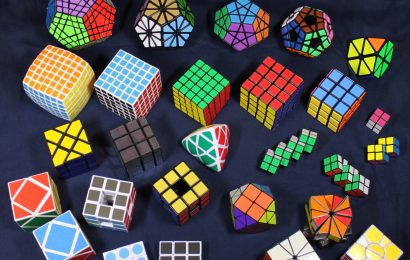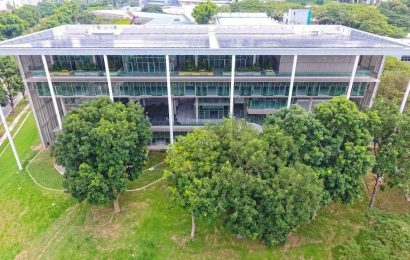China has taken one of the biggest steps in space exploration. Cotton seeds brought to the Moon aboard China’s Chang’e-4 mission have sprouted, marking the first time plants have grown on the lunar surface.
The craft and its tiny garden touched down on the Moon on January 3. Just to set things straight from the top, Chang’E-4 won’t be growing seeds on the lunar rocky surface itself – that is, in the regolith – in temperatures that veer between much colder and much hotter than what you’d find anywhere on Earth.
Instead, the craft is tending to cotton seeds buried in earthly soil, brought along in the container. The jar also contains potato, Arabidopsis and rapeseed seeds, plus a few fruit fly eggs and yeast – all loaded by researchers from Chongqing University.
“The six organisms could make up a mini-ecosystem, with plants producing oxygen and food to sustain the fruit flies,” says Bernard Foing, the lead scientist of ESA’s SMART-1 lunar orbiter mission. “Yeast could process the flies’ waste and dead plants to provide another food source.”
Growing veggies on the Moon
Plants have been grown on the International Space Station before but never on the Moon.
The ability to grow plants on the Moon would represent an extremely useful resource for long term space missions, like a trip to Mars which would take about two-and-a-half years.
It would mean that astronauts could potentially harvest their own food in space, reducing the need to come back down to Earth to resupply.
Can you really grow food on the Moon?
There’s still more to prove. China has to show that the plants can continue to grow, and that’s no mean feat between the widely varying temperatures and the lower gravity. The lander has to make dramatic changes to preserve the biosphere’s conditions and keep its interior relatively consistent.
Researchers did perform many experiments on Earth though, growing seeds in a simulated lunar environment, as well as on the International Space Station – where algae and fungi survived about 500 days in space.
The first seeds flowering in space were on a Soviet craft Salyut 7 in 1982.
But growing plants on the Moon, even in a sealed container, is very different. First, on the ISS there is essentially no gravity. “Not having gravity-driven convection makes it a real challenge to mix the air in a closed environment, and makes water delivery and management difficult as well,” says Anna-Lisa Paul, a space biologist at the University of Florida-Gainesville. On the Moon, there is some gravity – one sixth of Earth’s gravity – so this will be a lesser problem.
What is even more cause for worry is actually solar radiation. The Moon receives high particle radiation, much, much more than the ISS that is shielded by our planet’s magnetosphere. The sealed container tries to shield the plants inside, at least to a degree, but the conditions are much harsher.
The Moon also has extreme temperature swings – between day and night, and between areas that are exposed to the sun or covered by shade – with variations of 200-300 degrees Celsius in a single day. The container has a mechanism to transfer heat which should make it possible to maintain a temperature of about 20-30 degrees Celsius. According to Afshin Khan, an environmental scientist at the Blue Marble Space Institute of Science in Seattle, the heat control system is dependent on some kind of radioisotopic heat source, but the details are not clear.
Why isn’t it possible to grow plants on another planet?
Of course, growing fruits and vegetables requires the right amounts of oxygen, carbon dioxide, humidity, light and temperature control, and gravity — all of which can be extremely difficult to control in space.
Another problem is soil: It’s necessary for plant growth, but it also takes up precious space, and plants won’t readily grow in the soil on the moon or Mars. That’s why NASA is currently exploring techniques that use only a very little amount of soil.



